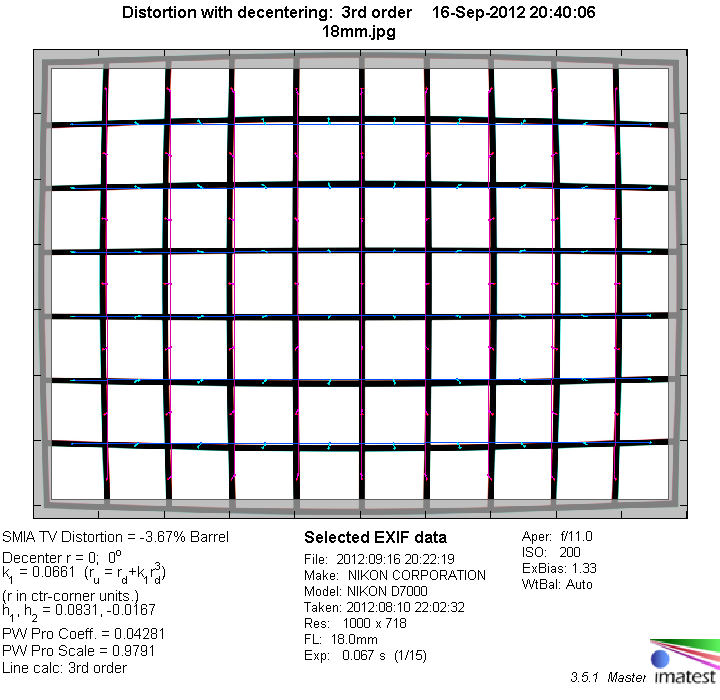|
Nikkor AF-S DX 18-300mm f/3.5-5.6 G ED VR - Review / Test Report - Analysis |
|
Lens Reviews -
Nikon / Nikkor (APS-C)
|
|
Page 2 of 3

Distortion
Super zoom lenses usually show quite pronounced image distortion and the Nikkor is no exception in this regard. At the shortest setting there is very pronounced barrel distortion of ~3.6% - this is not good but we've also seen worse. When zooming in, the type of distortion soon flips over to the pincushion kind. At 35mm, it's already visible and reaches a maximum of more than ~2.3% at 85mm. Zooming in further, the amount of distortion decreases a little, but remains on a rather high level.
|
Move the mouse cursor over the focal length text marks below to observe the respective distortion
|
| 18mm |
35mm |
85mm |
150mm |
300mm |
|

|
The chart above has a real-world size of about 120x80cm.
The two images below, shot at 18mm and 56mm, give an impression of the impact of high distortion on real-world subjects.


Vignetting
Vignetting is quite well controlled at medium focal lengths, but very pronounced at the shortest zoom setting and also visible from 150mm onward. As usual, stopping down helps to decrease the amount of light fall-off.

MTF (resolution)
Given its extreme zoom range the resolution figures are quite good although the Nikon clearly has its weak spots.
At 18mm the center resolution is fine. It is very good to excellent here but the borders and corners are a different story. They are only fair to good (just) and it doesn't really help that much to stop down here (technically).
The performance improves quite a bit at 35mm and 85mm where you can achieve very good results across the image frame around f/8. At 150mm there's a bit of a performance penalty in the image center but you can still achieve a very good quality here. The borders/corners are sort of soft at f/5.6 so you should stop down here in order to achieve better results.
A performance degration is more obvious at 300mm. The image center is still decent but a lack of contrast is more apparent here. Stopping down to f/8 helps to boost this a little. However, the outer image regions are never really snappy.
Please note that the MTF results are not directly comparable across the different systems!
Below is a simplified summary of the formal findings. The chart shows line widths per picture height (LW/PH) which can be taken as a measure for sharpness.
If you want to know more about the MTF50 figures you may check out the corresponding Imatest Explanations

Chromatic Aberrations (CAs)
CAs (color shadows at harsh contrast transitions) are clearly a weak spot of the lens. They are an issue across the zoom range and especially at at the wide end and in the middle range. Surprisingly they are comparatively tamed at 35mm and 300mm.

|